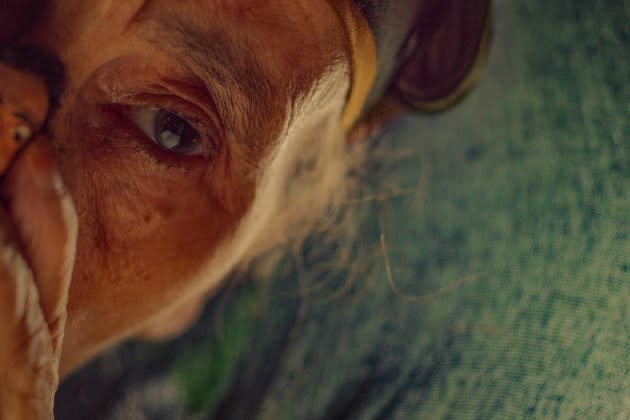‘The Mother of All Lies’ Review: An Inspired Moroccan Documentary Tackles Family Secrets and a Nation’s History
- Oops!Something went wrong.Please try again later.

Using a scale model of her childhood neighborhood and little figurines to represent family, friends and neighbors, many of them interviewed here, Moroccan documentary-maker Asmae El Moudir takes a disarmingly folksy, hand-crafted approach to unpack multiple secrets in her feature debut The Mother of All Lies.
The result is a sly, often playful but ultimately moving study of community, generational anguish and atrocities covered up by the state that blends documentary technique with originality and polished storytelling skill. El Moudir won the best director prize in the Un Certain Regard strand at Cannes, which will surely be a boon to the film’s distribution prospects and the director’s career.
More from The Hollywood Reporter
'Riddle of Fire' Review: A Sentimental Debut Buckles Under the Weight of Its Fancy
Cannes: 'How to Have Sex' Wins Best Film in 2023 Un Certain Regard
Mother has many fine and impressive features, but perhaps first among equals is El Moudir’s ability to use voiceover narration, spoken by the director herself, just enough to add structure and a personal touch but not so much that it swamps the polyphony of other voices in the film. Instead, it feels like the young director, who doesn’t wear traditional Islamic headscarves (unlike her mother Ouarda Zorkani and grandmother Zahra), is our guide to a tiny, strange lost world.
Needing to move, the family is packing up the apartment in the Sebata district of Casablanca, Morocco, where they’ve lived for years. Asmae notes how striking it is that there are no pictures of her as a child apart from one, of her in a white dress. This was taken in a neighborhood photography studio in front of a Hawaiian backdrop, a favorite fantasy portrait location for Moroccans, according to El Moudir.
In order to show all this instead of just relying on a rostrum shot of the picture itself, El Moudir persuades her father Mohamed, a successful builder, to build a scale model set of their house as seen from the street and the wider neighborhood, as well as a dollhouse-style structure that shows the interior of their apartment as it abuts that of the people next door. Equipped with dolls to represent everyone in the family as well as Abdalla and Said, two of the more important neighbors in the story, Asmae has everything she needs to create a kind of therapeutic apparatus to help coax long-dormant stories from the former residents.
What she uncovers is that a terrible trauma affected everyone when a public protest over the price of bread in the early 1980s turned into a bloodbath that killed many residents. Some, like a neighbor girl named Fatima, were killed in the street while others were taken off and tortured by the repressive regime. All of this is history barely talked of to this day in a state that, under a new king, still has a poor history of human rights — although nowhere near as bad as it was in the “Years of Lead,” as the period of terrible repression from the early 60s to the late 80s were known.
El Moudir nimbly moves between the macro and the micro levels, filling in the historical record in a way that’s accessible to non-Moroccan viewers but doesn’t understate the complexities. Meanwhile, both the director and we the viewers get to know her family much more, especially her angry and domineering grandmother Zahra, who rips up the little figurine meant to represent her and glares at the camera with ill-disguised disgust. Partly this is borne of the disapproval of figurative representation that many Muslims adhere to, but Zahra’s fury also stems from her own traumas that Asmae only learns while making the film.
But while this helps the generations to understand each other, there isn’t any false sentimentality about the experience; just a sense of how pain carries on in the blood of families and larger social units, especially if history’s wounds never see sunlight.
Best of The Hollywood Reporter
Natalie Portman at Cannes: "I Need to Leave the Drama for the Screen"
Ailing ‘Superman’ Star Valerie Perrine Finally Finds Her Hero: "The Guy Should Be Sainted"

